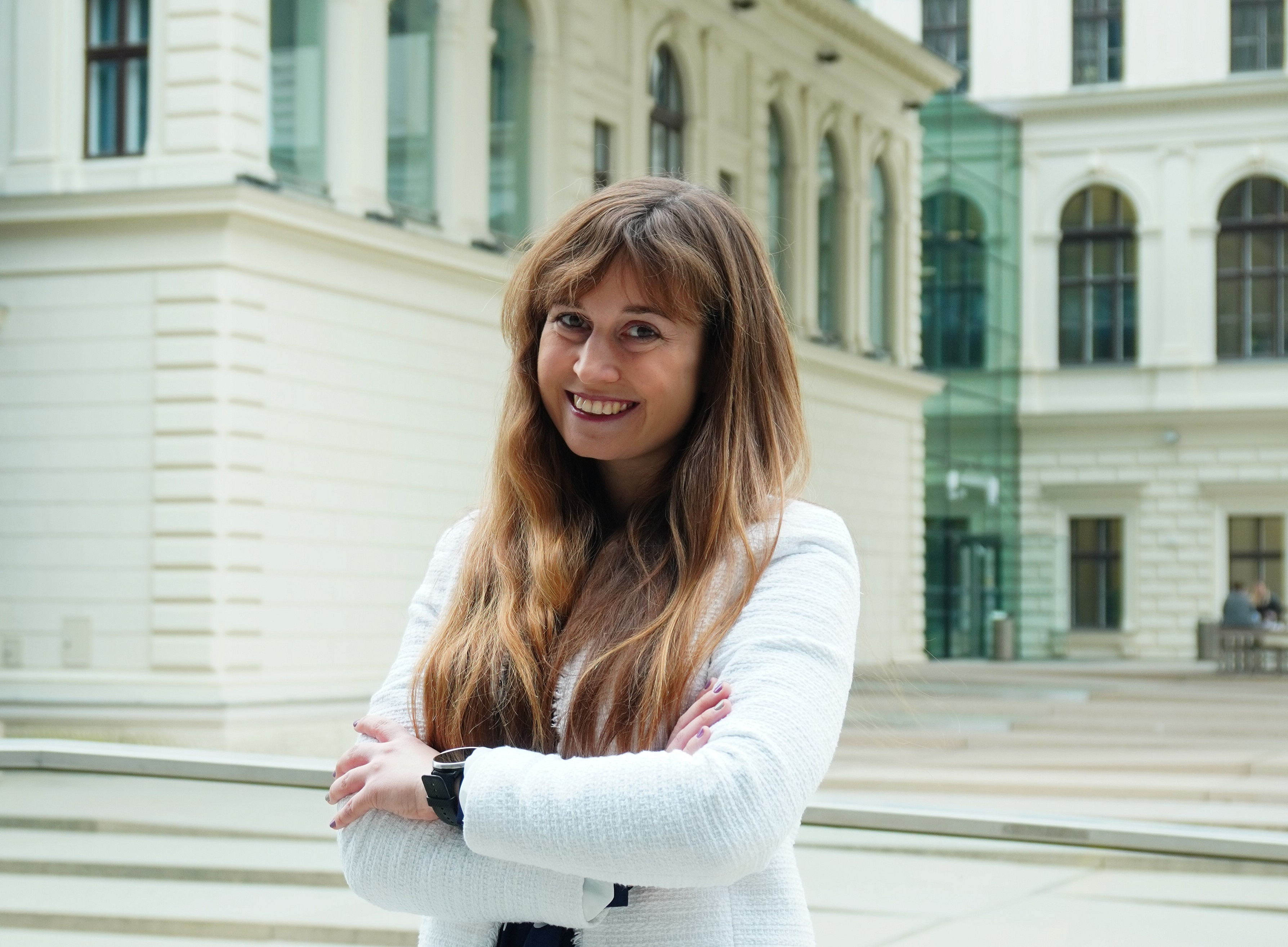Ms. Galicz, you are currently pursuing a PhD in Public Law at the Scuola Superiore Sant'Anna in Pisa, doing research at the nexus of health rights, asylum and non-refoulement. What brings you to Graz and to our university as a visiting fellow?
Graz is a human rights city, and the university has an excellent reputation for providing all conditions to conduct thorough research in many disciplines, including human rights, international refugee as well as European migration and asylum law. Indeed, over these months, I have managed to bring my PhD thesis forward thanks to the support provided by the members of the European Training and Research Centre for Human Rights and Democracy, especially Prof. Gerd Oberleitner and Lisa Heschl.
Since you arrived here in October, has your opinion on Graz changed?
Yes, I have realised that unfortunately coffee is not that good in Graz… Jokes aside, the University has turned out to be an extremely lively environment with a wide range of events, both formal and informal. Similarly, the city is one of the most developing areas of Austria, offering a lot of opportunities for young people both in terms of work and leisure time.
Having published extensively in the field already and due to your former role as country-of-origin information specialist in Hungary, you have followed the developments in the European asylum system in recent years. What are currently the biggest challenges in your opinion?
First and foremost, enforcing the high human rights standards the EU advocates and is supposed to protect. We are currently experiencing dangerous developments in many national contexts, yet the EU seems mostly concerned with budgetary and market issues, reacting only when the situation gets alarmingly out of control. Reactions often lack a comprehensive approach and are tackling only specific issues (e.g., national legal provisions violating EU law challenged through individual and quite lengthy infringement procedures) without considering the whole picture. However, the human rights of people on the move, just like the human rights of women, minorities, and other vulnerable groups, cannot be understood either individually or merely based on a monetary approach.
The burning refugee camp in Moria has become a symbol of the European Union’s failure to protect human rights while protecting its external borders. Are the EU’s new refugee camps better suited to pursue both aims equally, especially with regards to health rights?
Your question addresses another concern I would identify as a second big challenge for the Common European Asylum System. Indeed, the new European Pact on Migration and Asylum launched by the Commission in 2020 is an example of how the EU is trying to find a compromise between diffuse national interests. A number of new provisions mostly still under negotiation, e.g., those of the new regulation on a preliminary screening procedure, precisely resemble the national practices developed at the external borders which have been brought before both the Court of Justice and the European Court of Human Rights in recent years. There is evolving supranational case-law establishing that practices deployed in hotspots and transit zones in most cases are not compliant with current standards. My concern now is: What will happen when the supranational standards are lowered?
There are many uncertainties regarding the interpretation and implementation of the new legislative pieces: where will these screening procedures take place? Where will people be accommodated? Will these facilities be adequate for receiving different vulnerable groups? If not, where will they be transferred? Will there be enough specialised personnel, e.g., doctors, nurses, but also translators, lawyers? These questions are rather simple and practical, but extremely relevant, especially from a health perspective: nowadays, it is a commonplace that health is not only the absence of disease – it is a state of well-being, both physical and mental. Will the new Pact be not only able in theory, but also in practice, to guarantee such “well”-being? The widening gap between many elements of the Pact, especially regarding preliminary identification and reception (detention?) at the borders, and the EU Charter of Fundamental Rights or the European Convention on Human Rights is worrisome.
Apart from your legal expertise, you have earned language and literature degrees in Italian and Portuguese as well as a in translation. What is your advice to young scholars on how to juggle all of these interests and skills
I would recommend trying to enhance the synergies between different interests. For instance, I spent a semester at Nova University in Lisbon as an Erasmus student: during this period, I gained a deeper insight in the Portuguese legal history and the international Lusophone community, which then was translated into two papers presented at a national competition among Law students in Hungary. Similarly, I have acquired a thorough knowledge on the Italian language, the country’s history, and its culture. This helps me doing my legal research there. In Italian, I am able to understand all sources without difficulties and, since I am writing my PhD thesis in English, to translate all relevant documents from Italian to English. Moreover, working as a lawyer in COVID-times, I had to face practical implications of emergency law-making, which helped me understand better the theoretical dimension of how states of exception impact human rights. These intersections mostly come naturally for many people, but with a bit of consciousness we can make the best of them.
